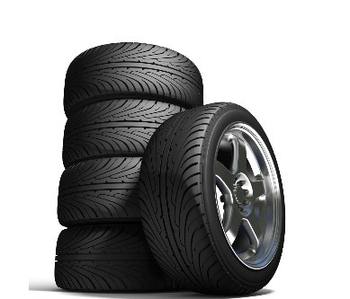Synthetic rubber technology upgrade is imminent
2025-06-28 13:52:45
 The European Union's "Tire Labeling Act" has significantly increased production costs for Chinese tire manufacturers, making it harder for them to compete in the EU market. This issue is widely acknowledged within the industry.
"The main reason for the cost increase is the need for higher-quality raw materials," explained a tire technician. "Just like how poor fabric can't make good clothes, low-quality rubber can't produce high-performance tires."
Rubber is the key material in tire manufacturing, with natural rubber, styrene-butadiene rubber, and butadiene rubber serving as the primary components. The quality of these "fabrics" directly affects the final product—the tire.
Currently, China's synthetic rubber technology lags behind global standards. Many new projects for butadiene and styrene-butadiene rubber are based on outdated designs, with little innovation in processes or product types. For instance, domestic butyl rubber production is over 50 years behind multinational companies, with significant gaps in both technology and operational experience.
Even though some Chinese firms have adopted Italian or Russian technologies, this only brings them up to the world’s average level. “The production process isn’t advanced enough, and the products remain at a low-end level,†said one expert. “At this point, synthetic rubber technology in China is struggling to keep up with the tire industry, and an upgrade is urgently needed.â€
Due to these shortcomings, many companies are forced to import synthetic rubber, despite the high costs. “We have no choice but to buy foreign products, and we don’t have much leverage in negotiations,†said a company employee. “If we use domestic styrene-butadiene rubber, the tire quality might not meet EU standards.â€
For example, Japanese, South Korean, and U.S. polybutadiene rubber is of higher quality, with an average price of around 30,000 yuan per ton, compared to about 20,000 yuan for domestic alternatives. The price gap is clear.
Some industry insiders suggest that while raw material differences can be compensated through formulas, using domestic materials often requires additional high-quality additives, which can drive up costs even further.
With growing pressure from "green tire" regulations, the need for synthetic rubber upgrades has become more urgent. Analysts believe that tire industry development will push synthetic rubber technology forward. At the same time, domestic manufacturers should actively invest in R&D, absorb new technologies, and innovate to meet market demands.
Xiong Yunjun, head of the Tire Marketing Department, noted: “In the short term, synthetic rubber may lag behind tire technology. But as green tire technology matures, China’s synthetic rubber industry will eventually catch up, and the current cost issues will gradually ease.â€
Industry experts agree that improving synthetic rubber technology is essential—not just for cost control, but for long-term competitiveness in the global market.
The European Union's "Tire Labeling Act" has significantly increased production costs for Chinese tire manufacturers, making it harder for them to compete in the EU market. This issue is widely acknowledged within the industry.
"The main reason for the cost increase is the need for higher-quality raw materials," explained a tire technician. "Just like how poor fabric can't make good clothes, low-quality rubber can't produce high-performance tires."
Rubber is the key material in tire manufacturing, with natural rubber, styrene-butadiene rubber, and butadiene rubber serving as the primary components. The quality of these "fabrics" directly affects the final product—the tire.
Currently, China's synthetic rubber technology lags behind global standards. Many new projects for butadiene and styrene-butadiene rubber are based on outdated designs, with little innovation in processes or product types. For instance, domestic butyl rubber production is over 50 years behind multinational companies, with significant gaps in both technology and operational experience.
Even though some Chinese firms have adopted Italian or Russian technologies, this only brings them up to the world’s average level. “The production process isn’t advanced enough, and the products remain at a low-end level,†said one expert. “At this point, synthetic rubber technology in China is struggling to keep up with the tire industry, and an upgrade is urgently needed.â€
Due to these shortcomings, many companies are forced to import synthetic rubber, despite the high costs. “We have no choice but to buy foreign products, and we don’t have much leverage in negotiations,†said a company employee. “If we use domestic styrene-butadiene rubber, the tire quality might not meet EU standards.â€
For example, Japanese, South Korean, and U.S. polybutadiene rubber is of higher quality, with an average price of around 30,000 yuan per ton, compared to about 20,000 yuan for domestic alternatives. The price gap is clear.
Some industry insiders suggest that while raw material differences can be compensated through formulas, using domestic materials often requires additional high-quality additives, which can drive up costs even further.
With growing pressure from "green tire" regulations, the need for synthetic rubber upgrades has become more urgent. Analysts believe that tire industry development will push synthetic rubber technology forward. At the same time, domestic manufacturers should actively invest in R&D, absorb new technologies, and innovate to meet market demands.
Xiong Yunjun, head of the Tire Marketing Department, noted: “In the short term, synthetic rubber may lag behind tire technology. But as green tire technology matures, China’s synthetic rubber industry will eventually catch up, and the current cost issues will gradually ease.â€
Industry experts agree that improving synthetic rubber technology is essential—not just for cost control, but for long-term competitiveness in the global market.Water Wheel Irrigation Sewage Table
Water Wheel Irrigation Sewage Table,Woltman Turbine Water Meter,Water Meter,Woltman Turbine Water Meter
Shandong xuheng instrument co., ltd , https://www.sdxuhengmeter.com